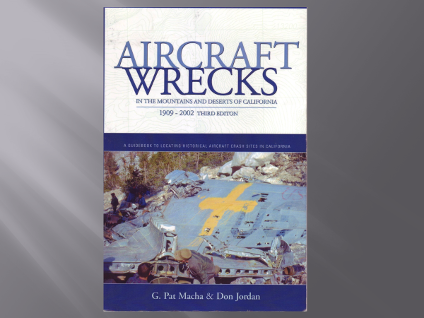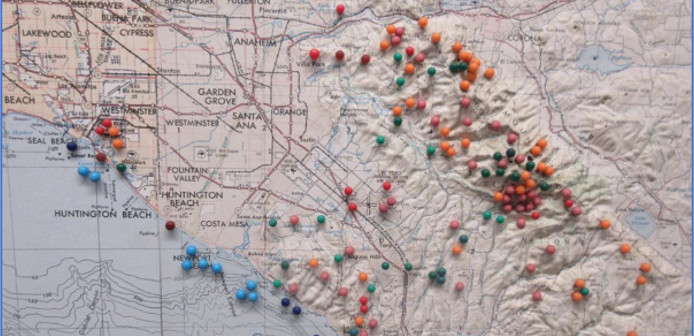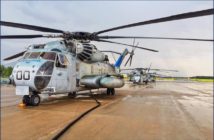Pat Macha, a noted public speaker lecturing on aviation safety and accident site investigation, was the guest speaker at the September 10th Grampaw Pettibone Squadron virtual meeting. He shared his experience investigating and documenting the various general aviation and military aircraft accidents and crash sites in Orange County.
Pat began by noting that there are 75 accident sites on open space land in Orange County. The county spreads over 791 square miles with a population of nearly 3,000,000. The above map displays the list of known sites that Pat identified. The green pins mark sites that Pat has visited and researched. Red pins are military, and the Orange pins are civilian. Pins in blue are offshore.
The history of aviation in Orange County included as many as 16 commercial, civilian and military airports. Today there are only three left in operation: Santa Ana/Orange County Airport, Los Alamitos Joint Forces Base and Fullerton. The last general-aviation airport to close was Meadowlark in Huntington Beach in the late 80s.
In his presentation, Pat mentioned military training bases beginning with Santa Ana Army Airfield, which was a P-38 training base and air defense.
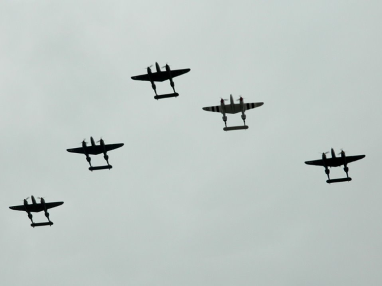 The P-38s were responsible for the west coast air defense of the United States, from North Island in San Diego up through Ventura. One week prior to the ANA meeting, Pat was contacted by relatives of a family that had been the victims of a P-38 plane crash in 1943. On June 27, 1943 a pilot took off from Santa Ana on a routine training mission when the plane’s engine caught fire. The pilot, Eugene Fair bailed out over the land and aimed his aircraft out to sea. The airplane with the torque of the one operating engine made a turn, came back towards the coast and crashed. Forty people were injured and four children were killed. Many of the victims suffered burns and shrapnel injuries. The pilot felt terrible about the mishap. Pat displayed a photo of a plaque that honored the Borrego and Silva families, both of whom lost children.
The P-38s were responsible for the west coast air defense of the United States, from North Island in San Diego up through Ventura. One week prior to the ANA meeting, Pat was contacted by relatives of a family that had been the victims of a P-38 plane crash in 1943. On June 27, 1943 a pilot took off from Santa Ana on a routine training mission when the plane’s engine caught fire. The pilot, Eugene Fair bailed out over the land and aimed his aircraft out to sea. The airplane with the torque of the one operating engine made a turn, came back towards the coast and crashed. Forty people were injured and four children were killed. Many of the victims suffered burns and shrapnel injuries. The pilot felt terrible about the mishap. Pat displayed a photo of a plaque that honored the Borrego and Silva families, both of whom lost children. 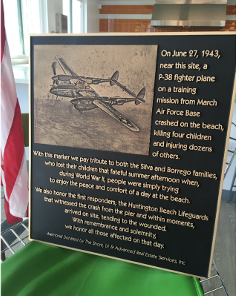
Pat described a series of crash sites both off shore and on land. For example, a P-38, identified by its oil cooler, in the water; an F6F-5N, identified by the 20mm cannon found near the crash site on land. The -5N is a night fighter and it can be identified by the fact that it is the only model of F6F-5 aircraft with both a 20mm cannon and 50 caliber machine guns. Another accident site was of an F4U-1/FG-1 built by Goodyear, and Pat explained that the full story on this particular aircraft is still not known. No exact date or details of the accident, other then it was a fatal crash. On some sites, even unexploded bombs are found.


Pat displayed a photograph of a Stinson 0Y-1 aircraft. Two of these crashed in the Santa Ana mountains; in addition, a photograph shows the remains of an L-5, where the fabric is all gone, but the framework and the Lycoming engine can still be identified.
A UC-64, Noorduyn Norseman was involved in a fatal accident that occurred in bad weather on the Santa Ana Mountains. Most of the aircraft is still available at the crash site. A photo of the fuel tank from the aircraft was displayed.
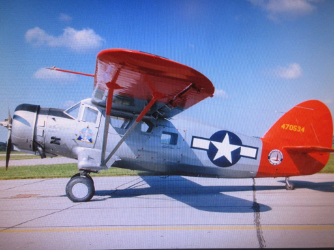 A family contacted Pat, indicating that their loved one, flying an F4U-4 had been involved in a mid-air collision out of El Toro some years before. The family member survived, but the pilot of the second aircraft did not. The family asked Pat to locate the crash site. The wife and daughter of Major Adolph Sadeski, the pilot who survived, asked Pat to take them to the crash site. Although authorities often claim that accident sites are cleaned up, Pat was able to locate the site and still find remains of the aircraft involved.
A family contacted Pat, indicating that their loved one, flying an F4U-4 had been involved in a mid-air collision out of El Toro some years before. The family member survived, but the pilot of the second aircraft did not. The family asked Pat to locate the crash site. The wife and daughter of Major Adolph Sadeski, the pilot who survived, asked Pat to take them to the crash site. Although authorities often claim that accident sites are cleaned up, Pat was able to locate the site and still find remains of the aircraft involved. 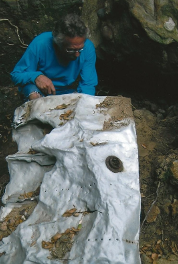
One of the mystery sites in the Santa Ana Mountains is the crash site of a Fairchild PT-19. While the aircraft can be identified, Pat did not know if the site was a military crash site or a civilian war surplus aircraft. All of the searches regarding accidents or missing aircraft related to the PT-19, have been unsuccessful in identifying this particular aircraft.
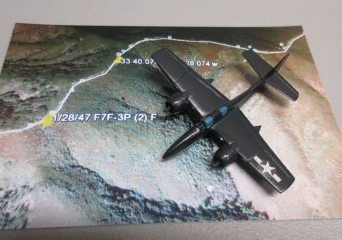
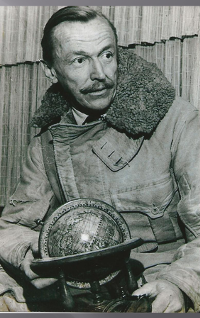
In his search, Pat met Gus Thomas, who was a Marine ace with 18 ½ kills to his credit. In 1947, he was involved in an accident with an F7F Tigercat. Based at El Toro, he traveled down to North Island. He picked up a 2-seat, photo recon version of the plane and returned with a passenger. On their return back to El Toro they encountered clouds and weather. While descending to land they crashed near Los Pinetos Peak, 50 feet below the peak, just as he was trying to line up to get back to El Toro. According to Pat, the F7F is a rare bird; only a few were operational with the Navy, though most were flown by the Marines during the Korean War. Near the F7F crash site are the remains of a Piper Aztec, flown by a famous pilot from the past, Frank Tallman. He was flying to Orange County when he encountered lowering ceiling and rain. While trying to avoid the clouds at cruising altitude he struck the side of a peak and died in the crash.
During the period when Los Alamitos was a Naval Air Reserve Base, two SNJs were involved in a crash. While flying in formation from the base, they were following the 91 freeway east-bound. As they approached the Santa Ana mountains, they entered the clouds. Because they were a little south of the freeway, they hit a ridge and both pilots were killed.
 Pat was told of a crash site south of Highway 74 in south county. The aircraft involved, was a Douglas F3D Sky knight. It was later known as the F-10 Skyknight. Both the Navy and Marines flew the plane and the Marines used it in Vietnam as the EF-10. The crash site was revealed after fire burned the brush in the a
Pat was told of a crash site south of Highway 74 in south county. The aircraft involved, was a Douglas F3D Sky knight. It was later known as the F-10 Skyknight. Both the Navy and Marines flew the plane and the Marines used it in Vietnam as the EF-10. The crash site was revealed after fire burned the brush in the a rea. Arriving on the site, Pat identified the aircraft type by the remains and the data plates located at the site, indicating it was built in 1951. The site suggested the plane was flying just below the ridge line in bad weather when it collided with terrain. The plane was operating out of El Toro and had a crew of two on-board when it crashed. The site also contained the remains of a crew member parachute, confirming the site where a crew member died.
rea. Arriving on the site, Pat identified the aircraft type by the remains and the data plates located at the site, indicating it was built in 1951. The site suggested the plane was flying just below the ridge line in bad weather when it collided with terrain. The plane was operating out of El Toro and had a crew of two on-board when it crashed. The site also contained the remains of a crew member parachute, confirming the site where a crew member died.
One of the first crash sites Pat investigated was a C-47 in the Santa Ana Mountains. As a student at Long Beach State University, Pat spoke with a classmate, who described the loss of his father in an aircraft accident locally. Pat knew of the crash site, but until that conversation with his classmate, he had not yet visited the location. The plane with a three-man crew, was flying in low clouds and fog and just a little south of course. It was heading west towards Long Beach when it crashed in Hagador Canyon. Photos indicate salvage operations removed a portion of the tail. Pat noted that the Navy have regulations to prevent unauthorized removal of the aircraft, however, neither the Air Force nor Army had any regulations to prevent such removal.
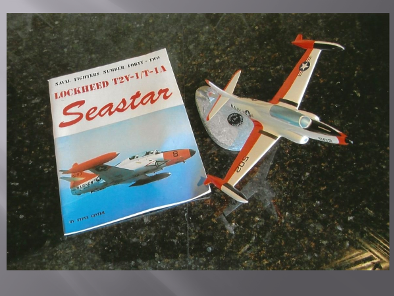 One of Pat’s favorite planes was a Navy Trainer, the Lockheed T2V Seastar, later called the T-1A. The aircraft was based on the Lockheed T-33. In May 1963, a T-1A launched from El Toro with two on-board. Taking off on a cloudy day, the pilot headed southeast after departing El Toro. Because of limited visibility, he flew into nearby Hagador Canyon and collided with the hill side. The son of the passenger asked Pat to find the crash site. Like many other crash sites, authorities indicated that the site had been cleaned of aircraft parts. However, Pat was able to locate easily recognizable aircraft parts.
One of Pat’s favorite planes was a Navy Trainer, the Lockheed T2V Seastar, later called the T-1A. The aircraft was based on the Lockheed T-33. In May 1963, a T-1A launched from El Toro with two on-board. Taking off on a cloudy day, the pilot headed southeast after departing El Toro. Because of limited visibility, he flew into nearby Hagador Canyon and collided with the hill side. The son of the passenger asked Pat to find the crash site. Like many other crash sites, authorities indicated that the site had been cleaned of aircraft parts. However, Pat was able to locate easily recognizable aircraft parts.
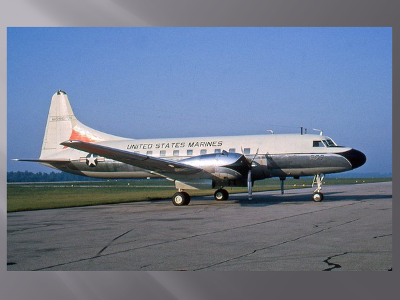 At El Toro, the Marines had an aircraft, a C-131H, identified as a ‘Hanger Queen’, due to multiple maintenance issues. Six Marine pilots wanting to obtain some flight time boarded the plane, taxied out and took off. Once airborne, they discovered the controls were jammed and they were unable maneuver. Being unable to direct the aircraft towards the water, they crashed in the Santa Ana Mountains, where only two survive. Accident investigation revealed that the control box had been sabotaged by jamming the controls with numerous tools. No suspect was ever identified.
At El Toro, the Marines had an aircraft, a C-131H, identified as a ‘Hanger Queen’, due to multiple maintenance issues. Six Marine pilots wanting to obtain some flight time boarded the plane, taxied out and took off. Once airborne, they discovered the controls were jammed and they were unable maneuver. Being unable to direct the aircraft towards the water, they crashed in the Santa Ana Mountains, where only two survive. Accident investigation revealed that the control box had been sabotaged by jamming the controls with numerous tools. No suspect was ever identified.
On March 1986, a Marine OA-4M Skyhawk experienced mechanical issues while returning to El Toro. Both pilots ejected safely and t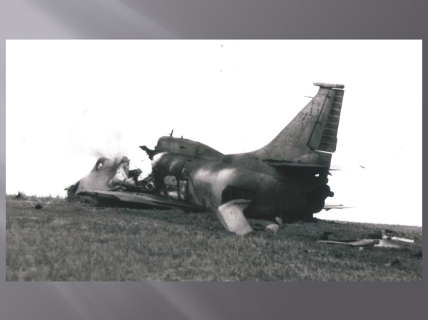 he unmanned plane landed virtually intact on a hill side in Laguna Hills. The part of the plane directly behind the cockpit was destroyed by fire, but the tail, wings and nose were untouched. Pat met one of the pilots, Ben Williams and took him to the site years later.
he unmanned plane landed virtually intact on a hill side in Laguna Hills. The part of the plane directly behind the cockpit was destroyed by fire, but the tail, wings and nose were untouched. Pat met one of the pilots, Ben Williams and took him to the site years later.
Pat discussed his experience and history of the Meadowlark Airport. Living about 300 yards from the airport, Pat observed numerous events at the field. It was a small field, narrow with a short runway, which contributed to numerous aircraft accidents over the years. Only one accident was fatal and that was off the airport property.
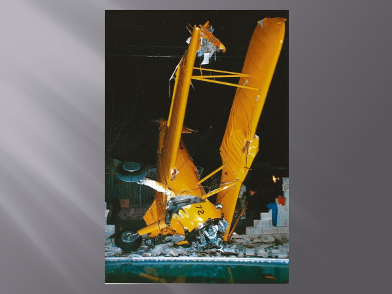 One of the events at Meadowlark involved a surplus Navy Stearman aircraft. The pilot having landed earlier, prepared to take off without checking the windsock and changing wind direction. In taking off, the plane was not able to clear telephone lines and crashed, injuring the pilot and passenger. The plane was restored to flying condition.
One of the events at Meadowlark involved a surplus Navy Stearman aircraft. The pilot having landed earlier, prepared to take off without checking the windsock and changing wind direction. In taking off, the plane was not able to clear telephone lines and crashed, injuring the pilot and passenger. The plane was restored to flying condition.
Another aircraft known as a Yankee, flew through a chain-link fence with the pilot walking away. Aircraft making forced landings were common. A Globe Swift had just taken off when it returned with an emergency. It landed short of the runway, striking a car parked before bouncing off the car. Neither the pilot nor the driver of the car was injured. A 172 with 4 passengers tried taking off and experienced engine problems before lift-off. The pilot terminated take-off, taxied back and tried to take off a second time. Upon take off, the plane was unable to climb and out of control collided with an office building. One passenger had a minor injury.
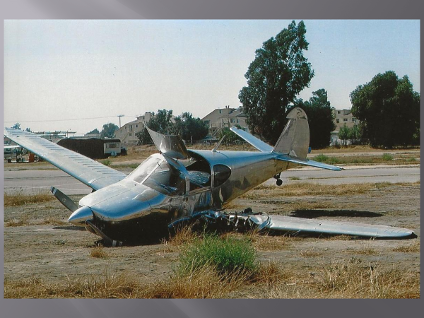
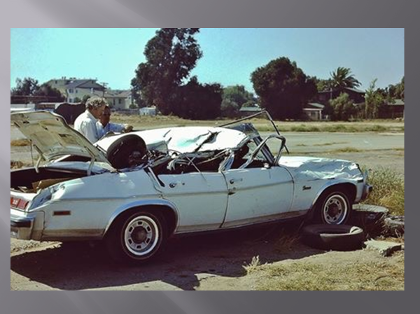
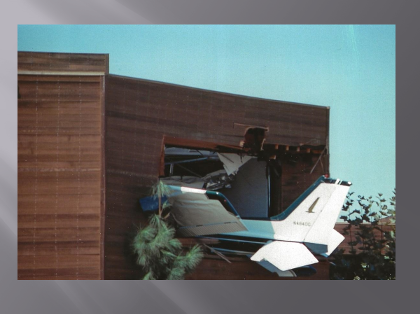
Pat described a program, Project Remembrance created to honor those who were lost in aircraft accidents. This included a request to find sites and take family members to the location. In the early 50s an SNB-5/C-45, also known as the Beech 18, was on an instrument training flight in the clouds. While following directions of a distracted controller, the plane in level flight collided with the terrain in the Saddleback Mountains. Most of the aircraft burned as a result of the impact. A portion of the tail assembly remained and the site was marked by painting a cross on the rocks near the impact. Most of the impact site was covered over by vegetation that had grown over the years and only revealed the crash site after numerous brush fires, which occurred over time. Pat took the son of the pilot on one trip to the site.
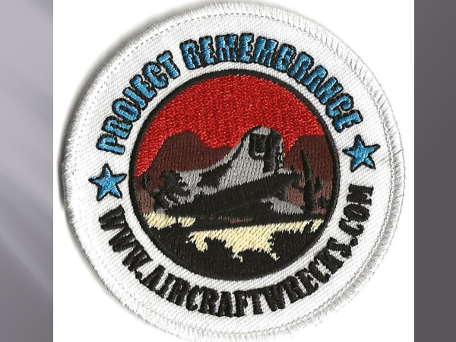
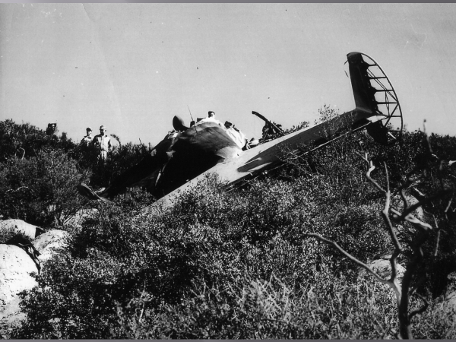
Pat described another site just below the crash of the SNB. A Navy Reserve crew, flying an SP-2E Neptune from Minnesota, was training at El Toro, practicing landings. A distracted controller gave the pilot a heading, and the plane flew into a canyon, too late to avoid terrain. The crew killed on this flight left 21 children without a parent. Family members contacted Pat and were taken to the site. Aircraft remains could still be found, even though an official clean-up had been completed. The Forest service will not allow any memorial to be erected. However, a container can be attached to the wreckage and any object associated with the crew can be inserted into the container.
Pat described two additional aircraft that crashed near the Neptune site. In 1987, a CH-46 helicopter with a Marine Reserve crew, flew into high terrain during heavy overcast conditions. In the same area, an FG-1 Corsair piloted by Marine Captain Calvin Vermillion, crashed on the hill side during a training flight in 1944. There are significant remains from the FG-1 on the site.
Pat worked with a Boy Scout in the local area who had selected as a project a memorial to honor the crew of the Marine helicopter and the Corsair Pilot. The scout, Brandon Shippy raised the funds, obtained permission from the county and had a memorial plaque erected on the site at Ladera Ranch.


On June 6, 1965, the worst air disaster in Orange County up to that time occurred. Pat detailed the events surrounding the flight of an Air Force C-135A, with a 12-man crew and 72 Marines on-board, that departed El Toro for Vietnam. The aircraft departed El Toro at 1:45 am in bad weather. The pilot was unfamiliar with the field or surrounding area. Departure procedure was to fly runway heading for three miles and execute a left-hand turn. At four miles, the pilot began his turn and his left wing clipped a ridge with the airplane cartwheeling and disintegrating, killing all onboard. Pat requested permission to visit the site some time after the crash investigation and clean-up. Although he was told that there was no evidence left on the site, he was able to locate personal effects, including dog-tags, which were returned to the family. In later years, a fire on the accident site revealed much more of the aircraft and personal effects.
On June 27, 2015, a memorial ceremony took place to honor the sacrifice of those on-board the flight. The memorial was created as part of a Boy Scout Project by Eagle Scout, Jordan Fourcher. Prior to Jordan’s Eagle project, the servicemen’s sacrifice had not been recognized. Their names are not etched on the Vietnam Memorial walls in Washington because they died in the U.S. before receiving their official orders. An interactive memorial kiosk at the Aviation and Heritage Museum at Orange County Great Park, formerly the El Toro Marine base, was created as a lasting monument and as part of his Eagle Scout project.
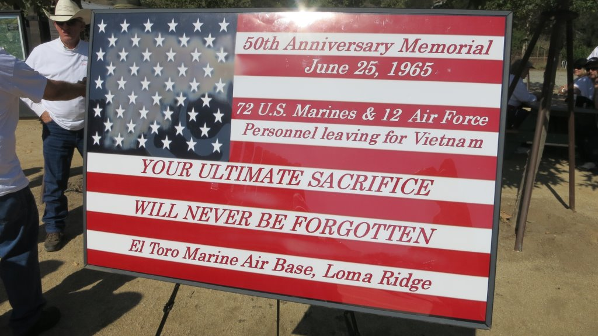
Concluding his presentation, Pat referenced his research and the books he published detailing the various accident sites in the Southern California area. Each book contains a list of identified accidents in the area and a detailed accounting of some of the accidents. Pat’s research can be located on his website; www.aircraftwrecks.com.



